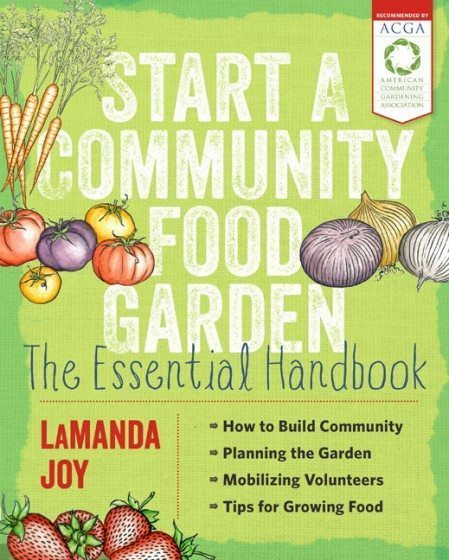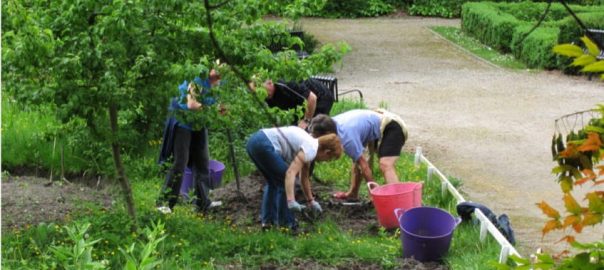A review of Start a Community Food Garden: The Essential Handbook, by LaManda Joy. 2014. ISBN-10: 160469484X. ISBN-13: 9781604694840. Timber Press, Portland. 224 pages.
 Start a Community Food Garden: The Essential Handbook is exactly that. This comprehensive resource is perfect for backyard gardeners wanting to go communal, community organizers wanting to impact their neighborhoods, and anyone else with a drive and a green thumb looking to make the place they live a little bit better.
Start a Community Food Garden: The Essential Handbook is exactly that. This comprehensive resource is perfect for backyard gardeners wanting to go communal, community organizers wanting to impact their neighborhoods, and anyone else with a drive and a green thumb looking to make the place they live a little bit better.
I am the program manager at Grassroots Gardens, a non-profit organization that manages a network of nearly 100 community gardens in Buffalo, New York. I can’t wait to recommend this book to our constituents. With our brutal winters, residents of Buffalo get antsy and want to start community gardens once the sun is shining and the temperature hits seventy degrees. We receive calls in late May, June, and even in July asking for help starting a new garden. It’s always hard to dampen someone’s positive energy, but we have to tell them that starting a community garden takes a lot of preparation, outreach, and organizing. We emphasize outreach and engagement when we help neighbors start a new community garden. It isn’t enough to just start a garden and expect that the community will automatically show up to participate. Forming new relationships takes more time and energy than most people seem to expect.
Part one of the guide is useful because it lays down the building blocks of community engagement for new gardens. For example, most people think they can run effective, productive meetings. If that were the case, we’d all be going to great meetings—but anyone participating in a neighborhood association or a community board knows that’s far from true. “There’s no quicker way to lose interest with a group of people than by wasting their valuable time,” Joy writes, drawing on her many years of experience as a community gardener in Chicago. This is the best advice on community gardening I have ever seen in print. I know from my own experience that if you don’t convince your neighbors to join a garden after one or two meetings, everyone’s energy and time has been wasted.
Planning is pivotal to creating a successful garden and Part Two of the book hits on every important step. It is a helpful resource for choosing an appropriate site, funding (both short and long term), and the really boring stuff such as insurance and bi-laws. Joy leaves nothing out.
Sustainability is the last crucial part to having a successful community garden. Keeping the momentum going ensures a long-lasting and transformative gardening project. Joy offers activities and tips that will keep gardeners engaged for the long term. However, the Teaching new Gardeners section seems a little out of place, and might be more appropriate as a supplemental technical growing guide.
I enjoyed reading the book and I’m certain to recommend it to new gardeners in my work. Future editions of the book might benefit from a new section on what to do if the garden fails—and believe me, some do. More advice on what to do when engagement dwindles, when personalities are polarizing—and, consequently, when the weeds start to grow tall—would be fruitful. I would also hope to see a companion to this guide that focuses solely on advocacy work. Our community gardeners are also community organizers—though they might not see themselves playing that role. These activists just need a little nudge and some more tools in their toolbox to become bigger earth movers.
Still, The Essential Handbook is a must-read—and simply a treat—for any budding community gardener.
Derek Nichols
Buffalo












Add a Comment
Join our conversation